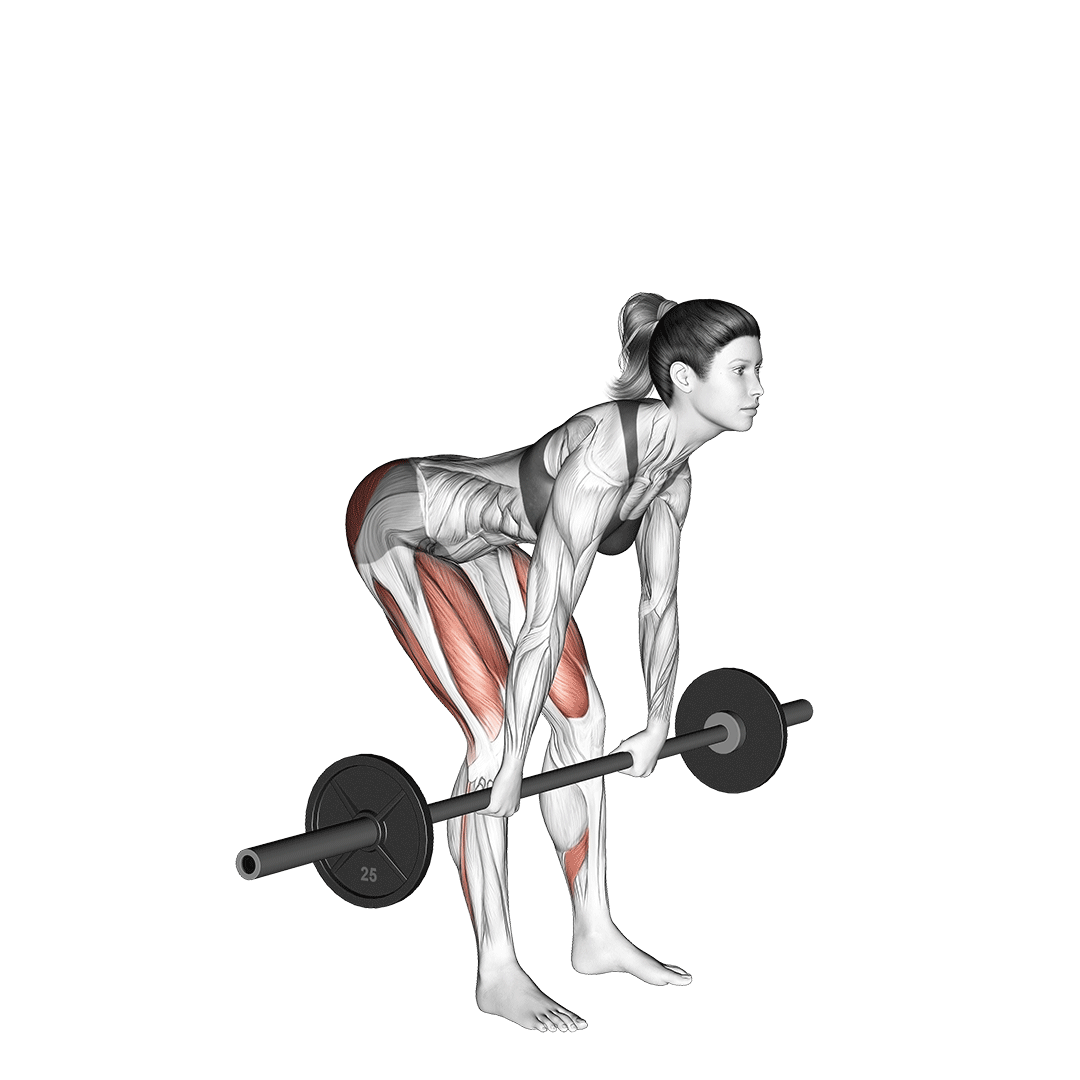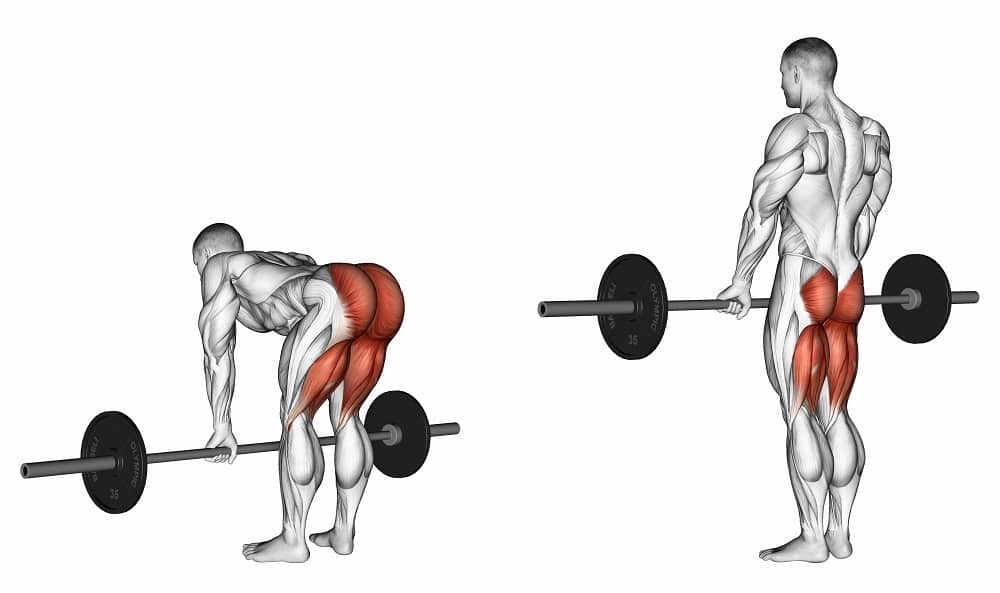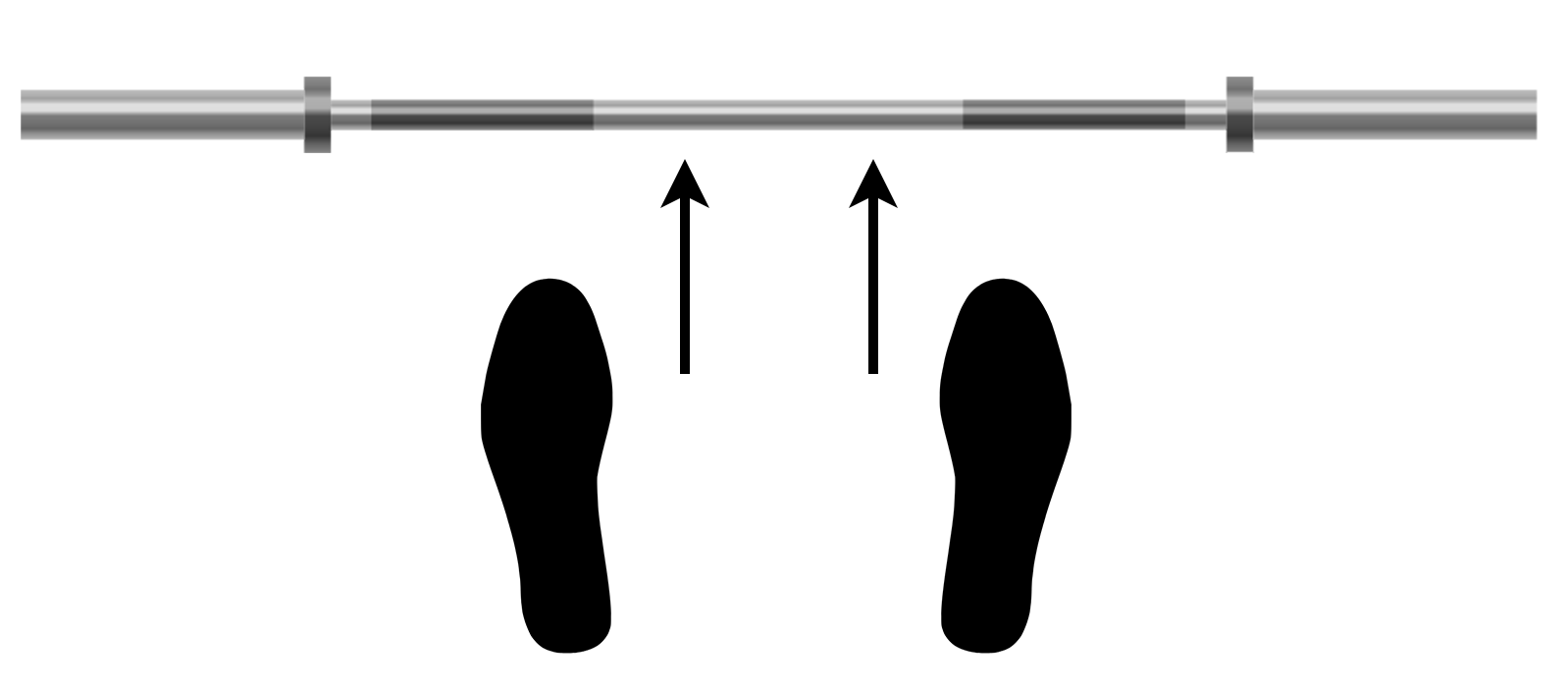RDL Hurts Lower Back: Signs, Form Issues, and More
The “RDL” or Romanian deadlift exercise is considered to be one of the most effective methods of training the posterior chain, especially in terms of the glutes and hamstrings.
In most cases, the RDL causing lower back pain is a result of poor form adherence, and may lead to more serious injuries occurring if left unchecked.
The lower back hurting from RDLs could be a sign of injuries from poor form, and that it is time for the lifter to stop performing the exercise until they have investigated and corrected whatever is causing the discomfort.
What is the Romanian Deadlift?
The Romanian deadlift is a multi-joint compound resistance exercise that makes use of facets of the conventional barbell deadlift for the purposes of targeting the lower posterior chain.

It is most frequently encountered in leg day workout sessions as a secondary compound movement, but may also occasionally replace other deadlift variations entirely for individuals with a history of injury or specific training needs.
Why do RDLs Hurt My Back?
Romanian deadlifts can occasionally cause back pain due to the position in which they place the lower back, making it particularly susceptible to injury and strain with even the smallest deviations from proper form.
While this level of risk is unfortunately unavoidable with the Romanian deadlift, it is still entirely possible to prevent injury by correcting your RDL form and ensuring that the back is given as much preparatory work as possible - including a proper warm-up routine and dynamic mobility drills.
Role of the Lower Back in the Romanian Deadlift
The lower back primarily acts as a stabilizing point throughout the Romanian deadlift, with muscles like the erector spinae, internal and external obliques and multifidus acting in concert to allow for hinging at the hips and a neutral spinal column during the exercise.

When performed correctly, the muscles of the lower back should not be responsible for moving the weight of the Romanian deadlift in any significant capacity. Instead, they should act as a bridge with which the strength of the glutes and hamstrings are translated into the upper body, where the source of the resistance lies.
The lower back also acts as a static set of muscles so as to keep the core and all of its non-muscular tissues safe and in-place throughout the movement.
Unfortunately, when a break from proper form adherence occurs, the lower back can often be forced to compensate for this failure to translate force, resulting in the comparatively weaker muscles therein loading much more than they can safely bear.
Bad Form Habits That can Cause Lower Back Pain
As we’ve established, the majority of lower back pain from Romanian deadlifts is caused by poor form adherence - of which should be corrected as soon as possible, as injuries to the lower back are among the most dangerous to sustain in the gym.
Fortunately, the majority of RDL form issues revolve around poor usage of the hips, making correcting them relatively easy.
Hinging at the Waist
The most grievous error to make during a Romanian deadlift repetition is hinging at the waist, rather than at the hips.
This can lead to much of the weight producing shear force across the lumbar portion of the spinal column, easily leading to injury and greatly reducing translation of force from the posterior chain to the upper body.

From an external standpoint, it may appear that the lifter is curving at the lower back, or otherwise keeping their pelvis immobile during the initial phase of the repetition.
Correcting this particular lifting habit will require both conscious practice of the hip hinge mechanic as well as further posterior chain mobility work, as one possible cause to waist hinging is poor gluteal muscle mobility.
Barbell Pulled Away From Body
Another possible reason for lower back pain during or after a set of Romanian deadlifts is the position of the barbell itself.
During a repetition of the Romanian deadlift, the barbell should remain relatively in contact with the body, ensuring that the lower back does not need to enter a state of extension so as to maintain control over the weight.

In most instances of this happening, it is simply because of the lifter failing to control the momentum of the barbell, thereby allowing it to drift away from the body in a manner that fails to properly utilize the force produced from the hip hinge mechanic.
To correct this, the lifter should adjust their initial stance and strive to utilize the forearms and deltoids in an isometric manner, stabilizing the barbell as needed and ensuring that maximum leverage over the weight is maintained.
Failing to Utilize Hip Hinge
The majority of the force needed to perform a Romanian deadlift is sourced from the lower posterior chain, of which attaches to the pelvis and the back of the femur. As such, it is no surprise that movement of the hips is absolutely essential to executing the Romanian deadlift in a safe and effective manner.
Failing to utilize the hip in a “hinging” motion where the body extends through the pelvis is another major mistake that can cause the lower back to take on more than it is capable of withstanding, resulting in pain and injury.
To properly utilize the hip hinge mechanic for the RDL, the lifter should bend at the knee somewhat and contract their glute muscles, straightening the knees and pushing the hips backwards before extending them as well.
Poor or Failed Core Brace
Another common mistake seen during Romanian deadlift performance is poor core bracing, where the lifter will either fail to maintain sufficient intra-abdominal pressure or entirely ignore it altogether.
Maintaining intra-abdominal pressure and bracing the core correctly allows the lower back to remain in a neutral curvature, effectively protecting the spine and nearby structures from damage.
As such, when the lifter performs the Romanian deadlift without a properly braced core, symptoms like pain and discomfort of the lower back can appear.
In order to correctly brace the core and maintain intra-abdominal pressure, the lifter should ensure that their abdominal muscles are fully contracted before even beginning the set, and that they inhale before the start of each repetition while maintaining said core brace.
How to Deal with Lower Back Pain From RDLs
Once you’ve identified the reason behind your lower back pain, it’s time to rehabilitate any injuries that may be present and to give your body time to recover.
If tweaking your RDL form reduces the intensity of the pain but does not entirely eliminate it, it is possible that you have sustained damage that requires a period of time out of the gym. Fortunately, accelerating this healing process is possible with a few at-home rehabilitation methods.
Stop Performing the RDL Temporarily
Though it may be obvious to some, the surest way of preventing the progression of an injury to the lower back is to eliminate the source of the mechanical stress behind said injury. In this case, it is the RDL and other weightlifting exercises that place a load on the back.
In more severe cases, the lifter may even need to abstain from training entirely - though this is likely the wisest option, regardless of the severity of the injury.
The length of time in which they will need to avoid the Romanian deadlift and exercises like it will depend on quite a few factors, and seeking out the advice of a medical professional may help them identify how long it will be until they are capable of training again.
Take a Recovery Period
As was touched upon in the previous section, simply abstaining from Romanian deadlifts may be insufficient for the purposes of recovery, as there are other activities that can potentially interrupt or undo any healing that has taken place.
This is the reason why it is advised that sufferers of exercise-induced lower back pain take a period of time away from any and all strenuous activities; the body will not be able to heal if its efforts are interrupted frequently.
Generally, minor injuries to the soft tissues of the lower back can take as little as one to two weeks to fully recover, though this will depend on intrinsic factors like age, gender and training habits.
Rehabilitate and Start Slow
Once the recovery period is complete or a physician has cleared you for active rehabilitation, performing low impact movements meant to target the lower back can help speed the recovery process, as well as allow your lower back to retain its full physical capabilities from before the injury.
The manner and intensity of a rehabilitation plan will vary from patient to patient, and it is generally a good idea to closely follow a physician’s instructions, rather than attempting to rehabilitate an injury yourself.
Even if your recovery period and active rehabilitation is complete, it is good practice to avoid jumping straight back into the same training intensity as before. Start with lighter loads and lesser volume, and work your way back up to full intensity so as to avoid a recurrence of lower back pain.
Consider Using Compression, Temperature and Pharmaceuticals
The old adage of “RICE” very much applies to a painful lower back from Romanian deadlifts.
Due to the location of the lower back, compression may be somewhat difficult to maintain, and as such it is more advisable that injured lifters use a medically-approved back brace if the injury prevents them from standing up straight.
Otherwise, the application of ice and warm compresses can aid in reducing swelling and pain, as well as the usage of pharmaceutical products like NSAID medications and topical camphor applications.
Remember that none of these methods are a substitute for actual rehabilitation, and that they are primarily done to reduce the incidence or intensity of symptoms. For the most efficient recovery, combine such methods with a period of recovery and subsequent active physical rehabilitation.
When to See a Physician for Your Lower Back Pain
In the event that the pain is accompanied by other symptoms like tingling, numbness (of the back or anywhere else), a loss of range of motion or a shooting pain in otherwise entirely separate areas - it is time to see a physician.
Lower back injuries are among the most serious that may be sustained from weightlifting, and are entirely capable of becoming even worse if left untreated. At the slightest sign of a serious back injury developing, immediately stop performing the Romanian deadlift and seek medical advice.
Final Thoughts
Remember that the Romanian deadlift is a posterior chain exercise, rather than a lower back one.
This means that the majority of the force should come from the muscles of the glutes and hamstrings, with the muscles of the lower back only acting in a stabilizing role.
If you’ve tried everything - checked your form, taken time out of the gym and even tried athletic coaching - yet the pain is still present, then it may be time to try out a Romanian deadlift alternative instead.
References
1. Frounfelter, Greg ATC, CSCS. Teaching the Romanian Deadlift. Strength and Conditioning Journal 22(2):p 55, April 2000.
2. Coratella G, Tornatore G, Longo S, Esposito F, Cè E. An Electromyographic Analysis of Romanian, Step-Romanian, and Stiff-Leg Deadlift: Implication for Resistance Training. Int J Environ Res Public Health. 2022 Feb 8;19(3):1903. doi: 10.3390/ijerph19031903. PMID: 35162922; PMCID: PMC8835508.
